The Acropolis of Athens is one of the most important and iconic archaeological sites in the world, and a must-visit for any traveler in Athens. Here, you will undoubtedly spend unforgettable hours surrounded by history, antiquity, and rich culture. At World Welcomes, we want to share a detailed guide to exploring the Acropolis:
History of the Acropolis
The Acropolis, meaning “high city” in Greek, is a rocky hill rising above the city of Athens and has been inhabited since prehistoric times. During the Golden Age of Pericles in the 5th century BC, the Acropolis became the center of religious and cultural life in Athens. The monuments built during this time, such as the Parthenon, the Erechtheion, and the Temple of Athena Nike, are outstanding examples of classical Greek architecture.
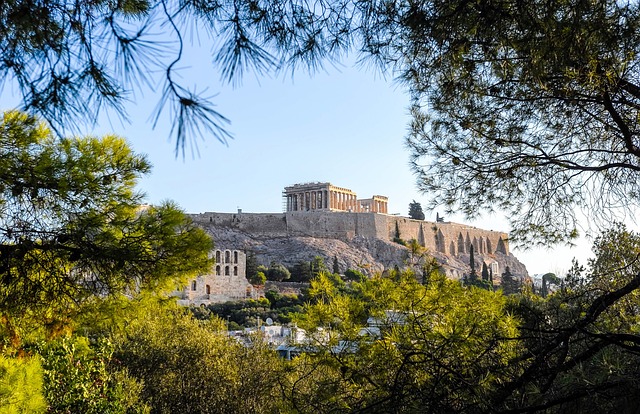
Main Monuments of the Acropolis
- The Parthenon: This Doric temple, dedicated to the goddess Athena, is the most famous monument on the Acropolis. Built between 447 and 432 BC, the Parthenon is a testament to the architectural and artistic ingenuity of the ancient Greeks. Its perfect proportions and sculptural details, like the Panathenaic frieze and the metopes, make it a masterpiece of classical architecture.
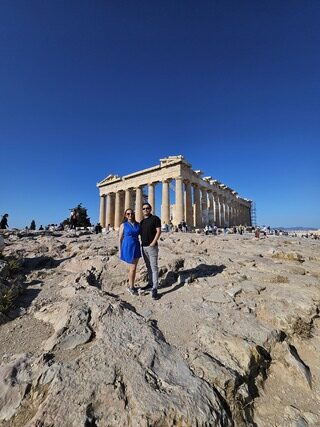
- The Erechtheion: This Ionic temple, built between 421 and 406 BC, is known for its Porch of the Caryatids, where six statues of women support the roof. The Erechtheion was dedicated to both Athena and Poseidon, and its asymmetrical design adapts to the uneven topography of the hill.
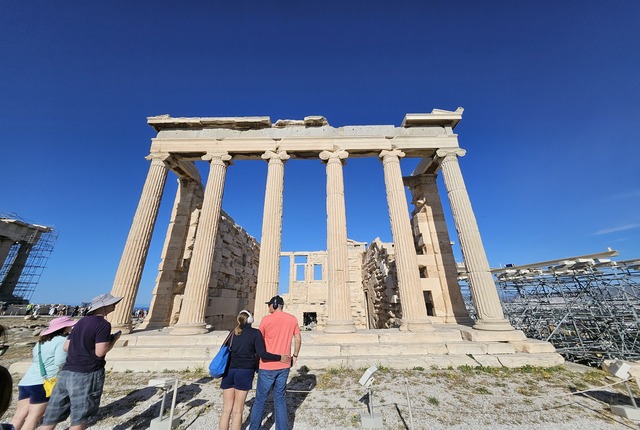
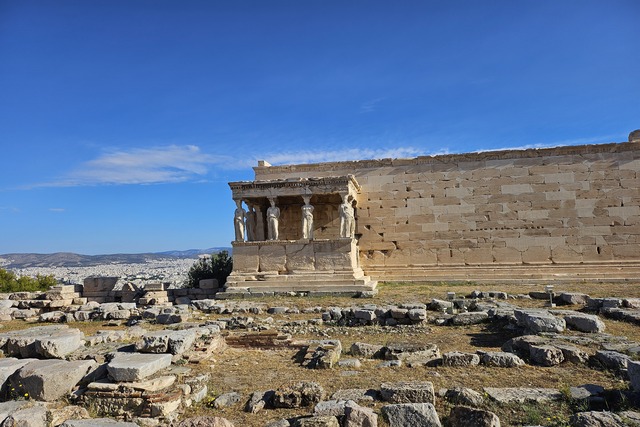
- The Temple of Athena Nike: A small but elegant Ionic temple dedicated to Athena as the goddess of victory. Built around 420 BC, the Temple of Athena Nike offers spectacular views of the city and the Aegean Sea.
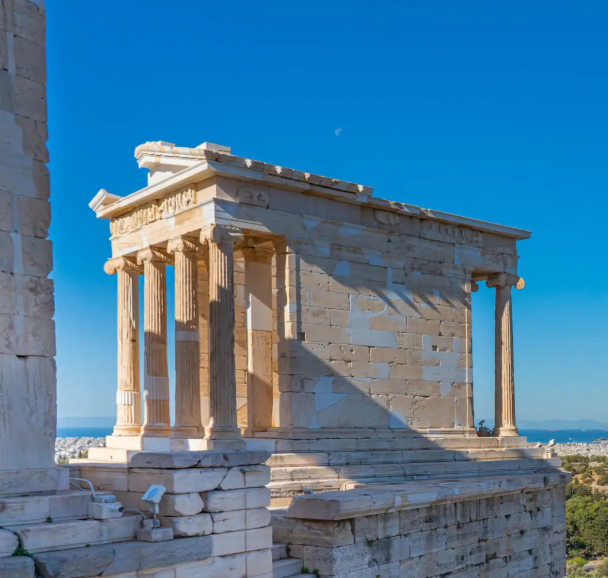
- The Propylaea: This monumental entrance to the Acropolis, built between 437 and 432 BC, served as a ceremonial gateway. The Propylaea has a sophisticated design with Doric and Ionic columns, providing an impressive introduction to the temples of the Acropolis.
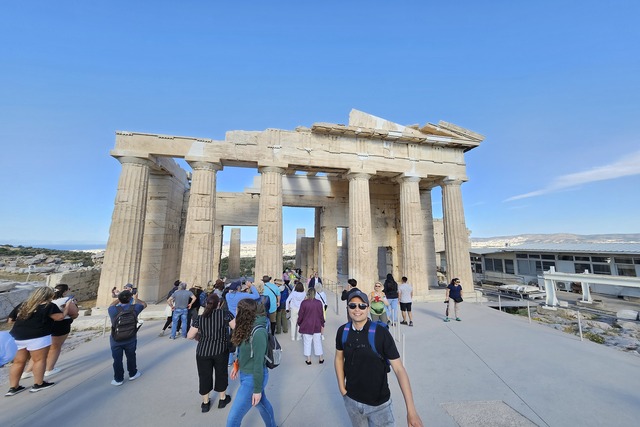
- The Odeon of Herodes Atticus: Although not part of the classical era, this Roman theater, built in the 2nd century AD, is an impressive addition to the site. It is still used today for concerts and events during the Athens Festival.
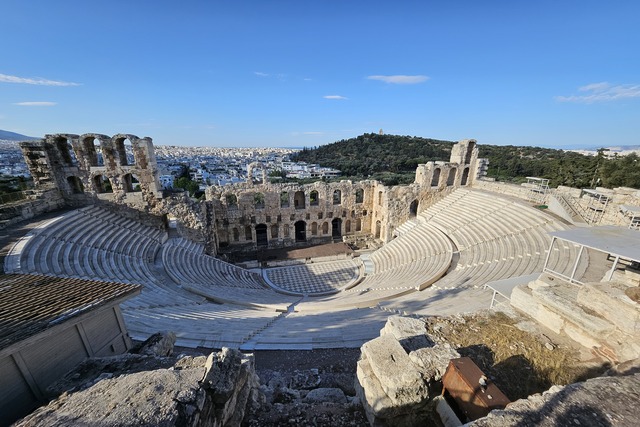
Tips for Visiting the Acropolis
- Buy your tickets in advance: To avoid long lines, it is advisable to purchase your tickets online in advance. You can also opt for a combined ticket that includes entry to other archaeological sites in Athens, such as the Ancient Agora and the Temple of Olympian Zeus.
- Visit early or late in the afternoon: To avoid crowds and the midday heat, plan your visit early in the morning or late in the afternoon. The light is also better for photography at these times of the day.
- Wear comfortable shoes: The terrain of the Acropolis is rocky and uneven, so it is important to wear comfortable and suitable walking shoes.
- Stay hydrated and protect yourself from the sun: Bring water, sunscreen, and a hat, especially if you visit in the summer. There are few shaded areas on the hill.
- Guides and audioguides: Consider hiring a tour guide or using an audio guide to gain a deeper understanding of the history and monuments of the Acropolis.
- Explore the Acropolis Museum: After visiting the hill, don’t miss the Acropolis Museum, located at the foot of the hill. The museum houses an impressive collection of artifacts and sculptures from the Acropolis, including some of the original Caryatids and parts of the Parthenon frieze.
Nearby Experiences to the Acropolis
Anafiotika: This picturesque neighborhood, located on the northern slopes of the Acropolis, resembles a small Cycladic island village with its narrow streets and whitewashed houses. It’s a charming place to stroll and take photographs.
Plaka: The oldest neighborhood in Athens, situated just below the Acropolis, is perfect for exploring its cobblestone alleys, souvenir shops, and traditional taverns.
Philopappos Hill: Also known as the Hill of the Muses, it offers an excellent panoramic view of the Acropolis and the city of Athens. It is a popular spot for locals and tourists looking for a peaceful place to enjoy the views.

Acropolis Tours
Below we share the best tours to visit the Acropolis, based on our experience, we hope you enjoy them as much as we do.
- Acropolis Entry Ticket with Optional Audio Guide: Visit the Acropolis, perhaps Greece’s most important landmark and one of the world’s most-visited sites. Receive your ticket to your e-mail along with instructions to download your audio tour (depending on the option selected) and go directly to the South Entrance, close to the Acropolis metro station. Take as much time as you need. Walk into the Theater of Dionysus and then, see the UNESCO-listed Parthenon Temple, which is dedicated to Athena, the goddess of wisdom and war. Visit the Propylaea, the temple of Athena Nike, Erechtheion, and see the Odeon of Herodes Atticus. Wander around all sides of the hill and get some marvelous views of the capital of Greece. See the surrounding mountains and the blue Aegean sea which surrounds Athens. BOOK HERE
- Acropolis and 6 Archaeological Sites Combo Ticket: Save time and money during your time in Athens with a pre-booked combo ticket that gives you access to 7 of Athens’ top archaeological sites. Enjoy savings of up to 50% and avoid the long lines of tourists at the Acropolis, Ancient Agora, Roman Agora, Temple of Zeus, Aristotle’s School, Hadrian’s Library, and Kerameikos Ancient Cemetery. Enhance your experience with a self-guided audio tour as you wander around at your own pace. Marvel at the Parthenon, a UNESCO World Heritage site, standing on Acropolis Hill, and immerse yourself in this impressive structure’s 2500 years of rich history. Whilst there, visit the Ancient Agora that lies on the north-western slopes of the Acropolis. BOOK HERE
- Acropolis and Parthenon Guided Walking Tour: Welcome to the Acropolis, an ancient marvel that has captivated visitors for centuries. Prepare to be transported back in time as we embark on a journey through the fascinating history and architectural prowess of ancient Athens. Our Acropolis tour begins at the famous Ancient Theatre of Dionysus, the birthplace of drama and the oldest Greek theater still in existence. As you stand among its ancient stone seats, imagine the theatrical performances that once captivated thousands of spectators. Learn about the pivotal role of theater in ancient Greek society and its enduring legacy in modern drama. Then walk all the way up to Propylaia Gates the imposing entrance gateway that will instantly impress you with its grandeur and symmetry. As you step through its monumental gates, feel the weight of history as you join the ranks of ancient philosophers, statesmen, and worshippers who once roamed these sacred ground. BOOK HERE
Visiting the Acropolis of Athens is a unique experience that allows you to immerse yourself in the cradle of Western civilization and admire some of the most impressive masterpieces of classical Greek architecture. From the majesty of the Parthenon to the elegance of the Temple of Athena Nike and the uniqueness of the Erechtheion, each monument tells a story rich in history and culture that has influenced the entire world.
Recommending a visit to the Acropolis is essential for any traveler who wishes to understand and appreciate Greece’s historical legacy. In addition to its archaeological value, the Acropolis offers spectacular panoramic views of Athens and the Aegean Sea, providing a visual context that enhances the magnificence of this site. Whether you are passionate about history, architecture, or simply seeking an unforgettable cultural experience, the Acropolis of Athens will leave you in awe and with a deep respect for humanity’s past.

